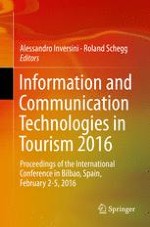2016 | OriginalPaper | Buchkapitel
Effects of Virtual Reality and Augmented Reality on Visitor Experiences in Museum
verfasst von : Timothy Jung, M. Claudia tom Dieck, Hyunae Lee, Namho Chung
Erschienen in: Information and Communication Technologies in Tourism 2016
Aktivieren Sie unsere intelligente Suche, um passende Fachinhalte oder Patente zu finden.
Wählen Sie Textabschnitte aus um mit Künstlicher Intelligenz passenden Patente zu finden. powered by
Markieren Sie Textabschnitte, um KI-gestützt weitere passende Inhalte zu finden. powered by
